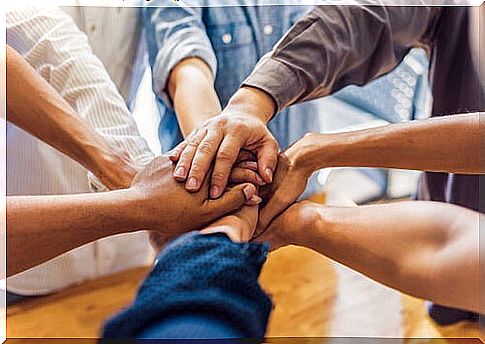Changing The World Is Possible With The 3.5% Rule

Political scientist Erica Chenoweth, along with her colleague, Maria J. Stephan, were the creators of the 3.5% rule. This is a formula that emerged from a careful study of the last hundred years of history. The two experts came to the conclusion that social movements that manage to mobilize 3.5% achieve success in their demands.
The study of these two political scientists was published under the title Why Civil Resistance Works (Why Civil Resistance Works). It was edited by Columbia University and released in 2011. Shortly after, it won the Woodrow Wilson Foundation Award from the American Political Science Association.
The 3.5% rule is considered a real key to changing the world . It applies to peaceful movements and is based on a large number of historical events that have taken place in the 20th and 21st centuries. Everything indicates that it works in practically all cases.

The origin of the 3.5% rule
Erica Chenoweth began doing her research on this in 2000. She was a Ph.D. student at the University of Colorado at the time and did not really intend to formulate a new thesis on social change. What Chenoweth initially sought was to study the factors contributing to the rise of terrorism.
She was there when she was invited to an academic workshop organized by the International Center of Nonviolent Conflict (ICNC). This is a non-profit organization based in Washington. During the workshop, the exhibitors presented several strong cases of peaceful protests that had achieved great social changes.
Chenoweth viewed this information with some skepticism. He also realized that it had not occurred to anyone to compare the success rates of violent movements versus non-violent movements. So, initially, it was set out to get that data. How many violent movements were successful? How many nonviolent did it? Those were his basic questions.
A big surprise
To answer the questions that assailed her, she undertook a long-term investigation in the company of her colleague María Stephan. The two made a detailed review of the social movements of resistance that had taken place between 1900 and 2006. In total, they reviewed 323 campaigns of this type.
The two researchers indicated that a movement that had achieved its objectives within a period of no more than one year after its peak was considered successful. The changes had to be a direct result of his action. Violent movement was defined as one that made use of lethal weapons and that implied destructive effects on people and property.
They applied all their criteria very rigorously. They found data to support one idea: Nonviolent movements were twice as likely to succeed as violent movements. In the cases they studied, 53% of the peaceful resistance movements had succeeded and only 26% of the violent ones had.

The 3.5% rule
The researchers’ first big conclusion was that nonviolent movements were more likely to be successful because they had greater potential to win new adherents. In turn, this possibility of recruiting more and more volunteers followed the snowball effect: more people called more people.
Once this was established, the researchers wanted to inquire into why some peaceful movements were successful, while others were not. Comparing the most emblematic movements of this type, they found a common pattern: all of them had managed to mobilize 3.5% or a greater percentage of the population. Thus was born the 3.5% rule.
The 3.5% rule indicates that when this percentage of the population is mobilized in a sustained manner around a cause, it can practically be taken for granted that it will have a journey. The researchers also managed to establish that the most effective method of nonviolent resistance protests are general strikes and consumer boycotts.
All this means, neither more nor less, that minorities can change the world. 3.5% of the population is actually a very small number, but it has consistently been enough to produce big changes. Likewise, the study proves that violent methods are less likely to succeed. Both are hopeful criteria.









